
Many a childhood adventure began with this screen:
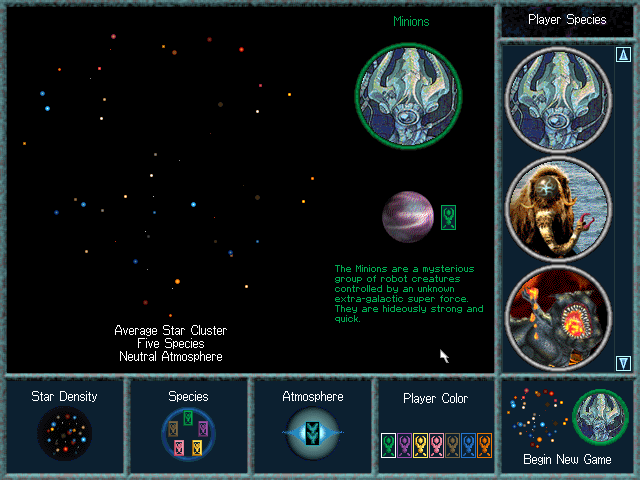
Gosh, it brings me back just thinking about it — back to a time when I was ten years old and had barely scratched the surface of the possibilities videogames had to offer. I can’t tell you how many times I booted this game up and leapt headfirst into a fresh new galactic playground. And we’re about to have two new playgrounds to explore!
Every time a game of Ascendancy created, a new star cluster will be randomly generated based on the options you choose on this creation screen. There are only five areas of customization, but each one (with the exception of player color) effects enormously how the game will play out.
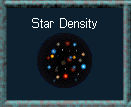
Star Density determines the number of stars in your cluster. Increasing or decreasing star density mainly determines how long the game will take, with anything above “Average” (~50 stars) taking a very, very long time even to explore the whole galaxy — never mind to conquer it.
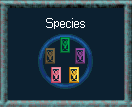
Next up is the number of species in the game, from three to seven. As long as I have a big enough galaxy to reasonably fit them, I crank the species counter up to its maximum of seven. The game is just more fun with the widest possible variety of alien personalities coming to the table. (Note that all species beside yours are selected randomly.)
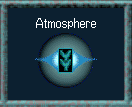
Atmosphere is what most affects the nature of the game you’re about to play. Peaceful means most species will be friendly; on Hostile they’ll all immediately be trying to kill you. A Neutral atmosphere, on the other hand, keeps all possible interactions open. Some species can eventually be convinced to ally with you, some will go on the offensive, and others will mostly keep to themselves.
![]()
Each of Ascendancy‘s 21 species has a special attribute, ranging from the Kambuchka’s innate knowledge of where all species’ home systems are (nigh useless) to the Chamachies’ once-every-89-days ability to make a new technological breakthrough instantly (hilariously overpowered). I won’t bore you with the details of all of them here; instead, I’ll cover the relevant ones when they’re encountered in the LPs.
And once you’re happy with your choices, you end up here:
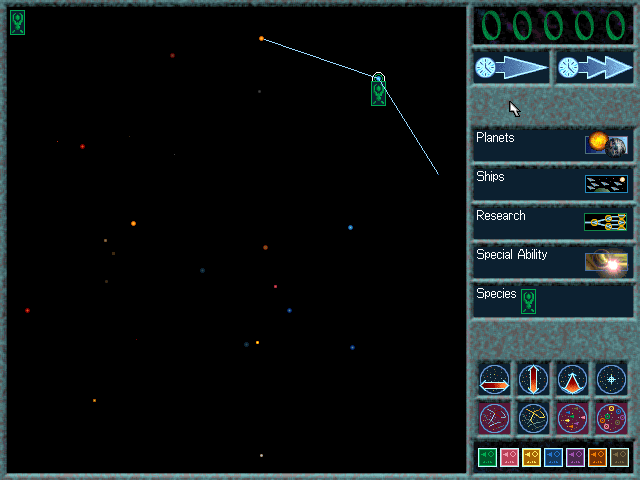
You’ll be seeing a lot of this screen. This is the highest-level view, of the whole star cluster, where you can also access various information screens — lists of planets and ships you own, the research tree, information on your species’ special ability, and an interspecies diplomacy menu. You can also manipulate the map (at the bottom right) or advance time (in the top right). Time advances one day at a time — every day ships will travel closer to their destinations, construction and research projects will progress, and all ships and planetary weapons will recharge.
At the start, the cluster-level view will be very sparse, with only your home system and connected star lanes in view, but as you travel to new systems, those systems and their adjoining star lanes will become visible. The whole galaxy will unfold as a network of star lanes until it looks something like this:
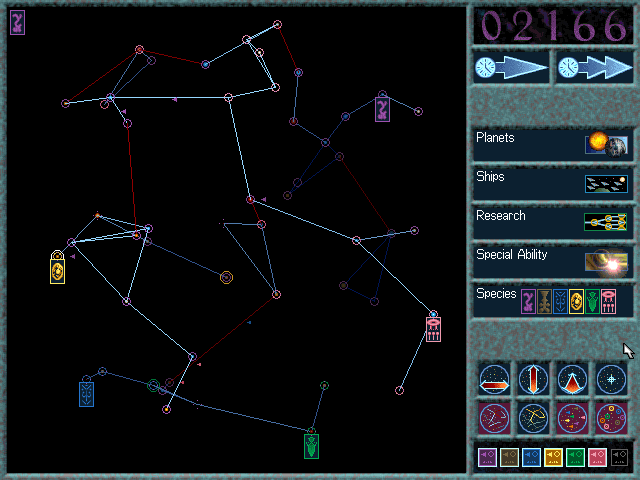
Here’s an example of a fully-explored cluster from one of my old runs. You can see ships represented as small triangles, either traveling through star lanes or parked in star systems. Each dot is a system, circled in the colors of any species who own planets there, and if the species’ emblem appears below, that’s their home system. Click on any one of them (assuming it’s been explored), and it’ll take you to the system-level screen.
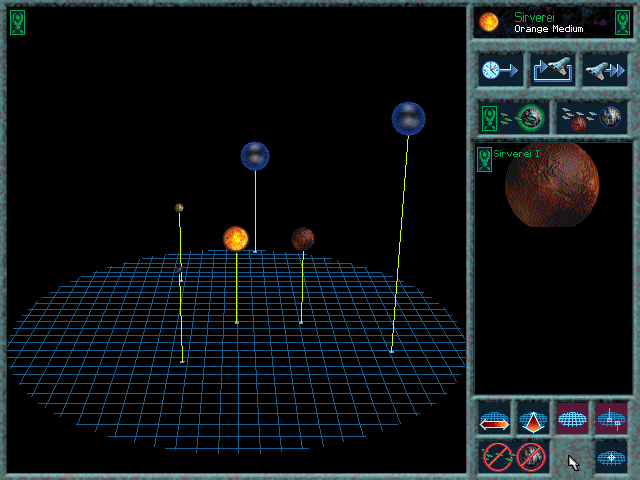
Here you’ll see the system’s star, planets, and star lanes. This is also where you issue orders to your ships, and where all combat takes place. Every system is connected to at least one other system by a star lane, which is the only way to travel between them. Star lane end points are represented as either blue or red spheres at the edges of the system, and once a ship is sent in, it will be out of contact on its way through the lane for days or weeks with no way to recall it.
Finally, there’s one more level of magnification that is accessed by clicking on planets themselves.
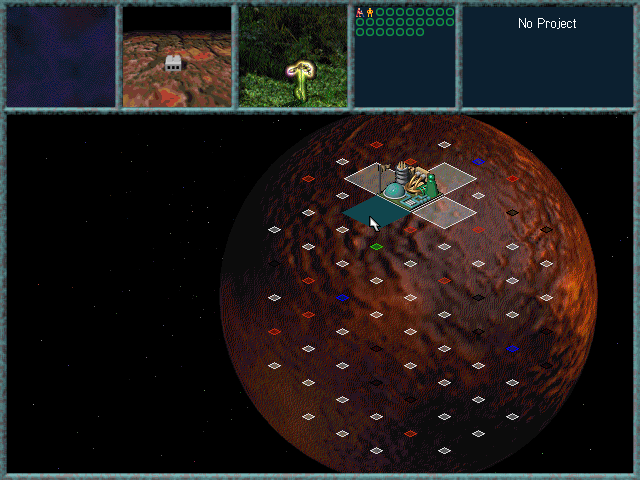
Planet-view is where you do all your construction. You can build on any of the colored squares on the planet’s surface, as well as ten orbital slots to the left. Most of the planetary projects will be related to one of the three core industries: research, production, and prosperity.
There’s no money or raw materials in Ascendancy. You don’t mine metals or grow food, and the only thing that can be traded is information. Time is your singular resource, so it’s all about reducing the amount of time it takes to do things. Building a laboratory (research) reduces the time for new technology to be invented; a factory (production) speeds up other construction projects on that planet, and an agriplot (prosperity) increases the growth rate of the planet’s population.
At the start of a game, you’ll have only one planet in your territory, but as soon as you’ve researched engines, power sources, colonizer units, star lane drives, and basic ship hulls to contain all that stuff, you can begin expanding to other planets and star systems. Each planet you add to your empire is a new platform from which you can build ships for your fleet, research facilities to help in advancing your species’ technological development, or orbital defenses to hold off invasions of your territory. And since the number of ships you can build is based directly on the number of star systems you own, every new system increases the potential size of your fleet.
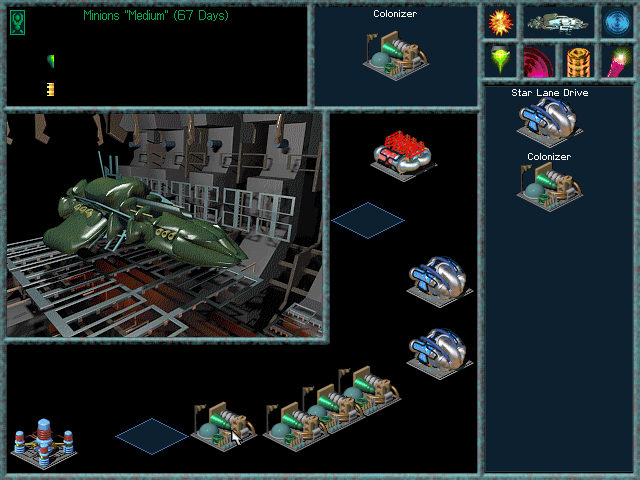
That about covers the basics of the game. Enough to understand what’s going on in the LP, at least. I hope. There’s a fantastic resource here, though, if you want to really get into the nitty-gritty of the game mechanics — and especially if you want a rundown of all the species, structure types, and ship systems.
But now, back to the LP.